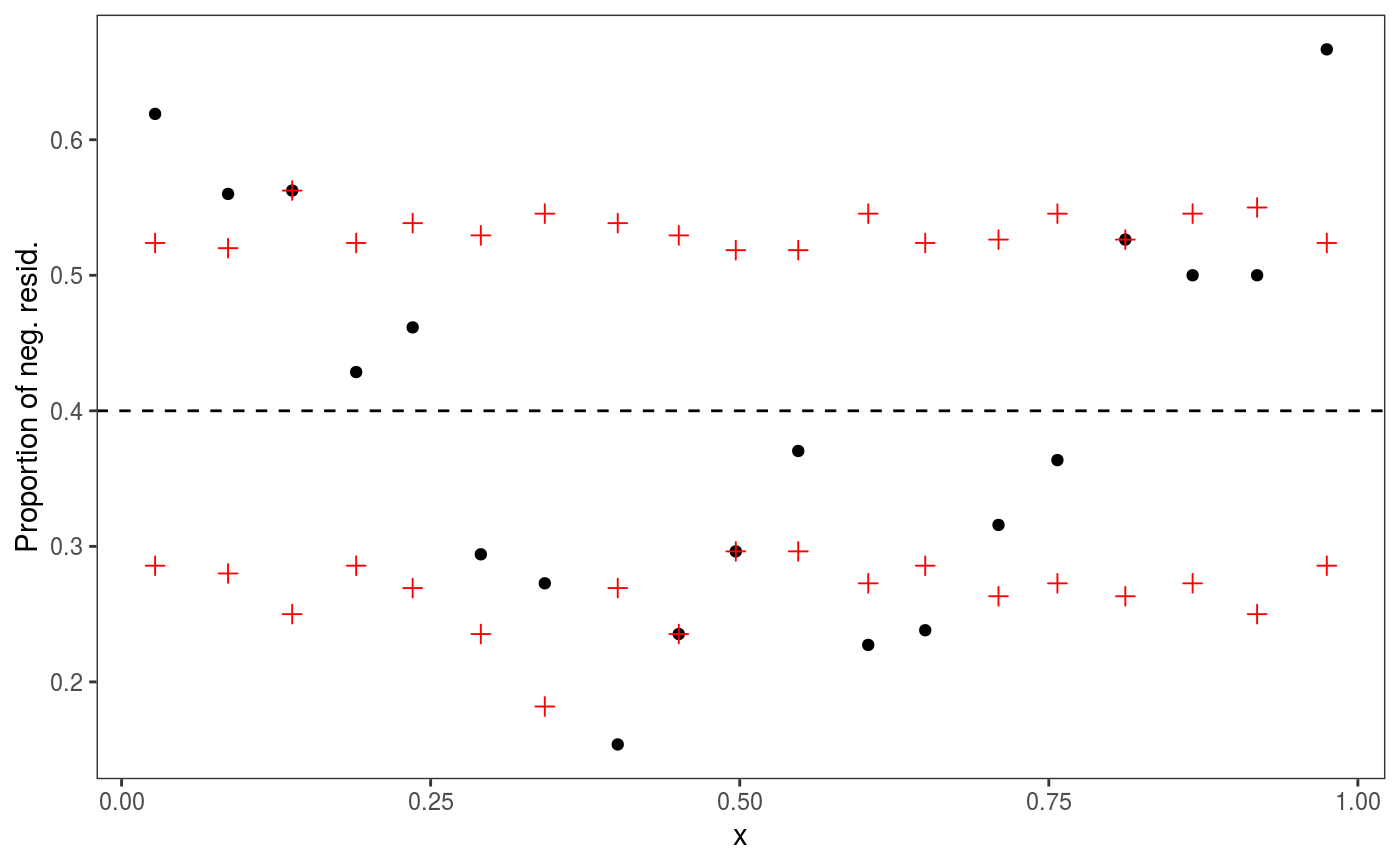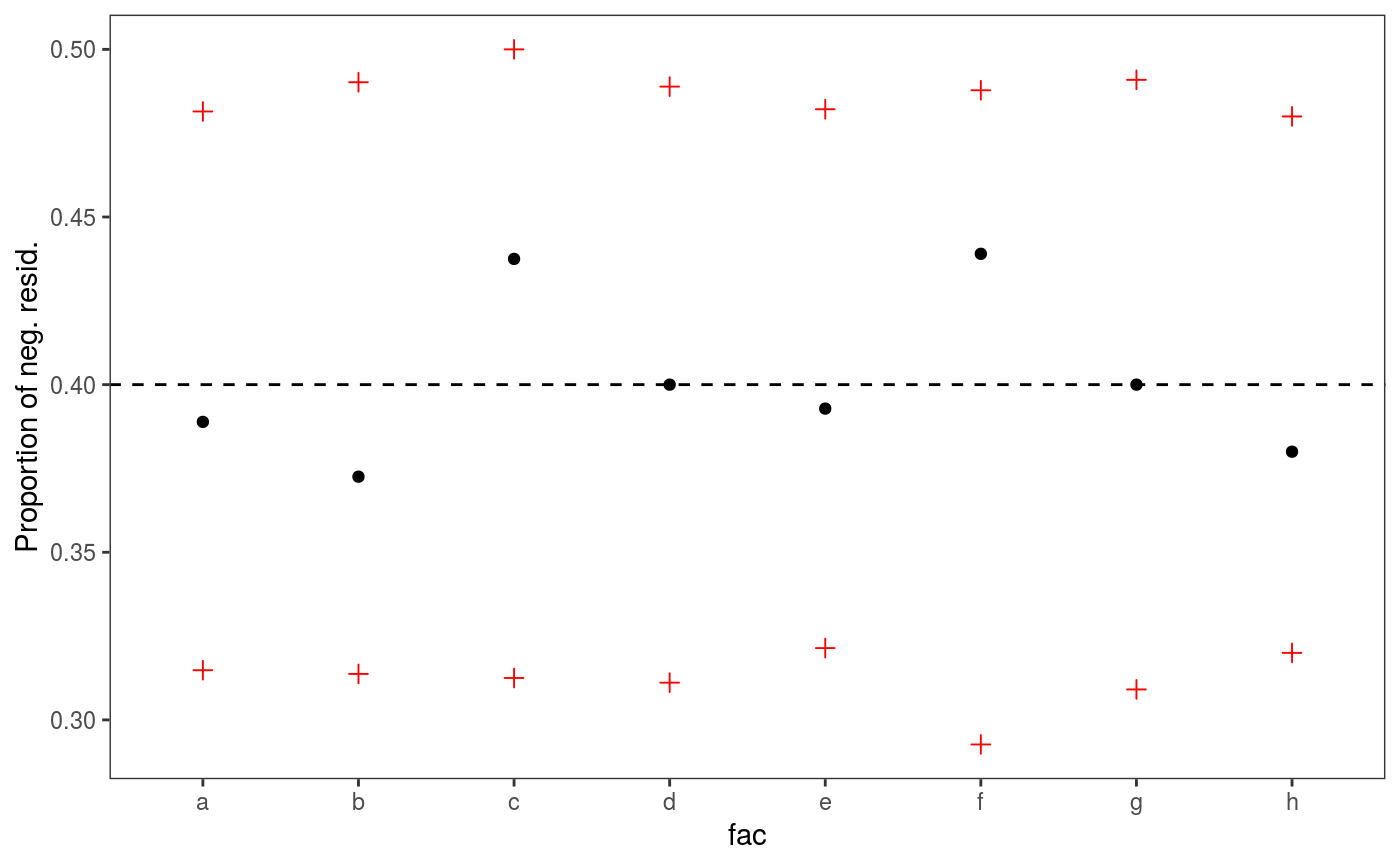This layer is mainly useful when checking quantile GAMs fitted using the qgam
package. The residuals, r, are binned according to the corresponding value of a
covariate, x. Then the proportions of negative residuals within each bin are calculated, and
compared with the theoretical value, qu. Confidence intervals for the proportion
of negative residuals can be derived using binomial quantiles (under an independence
assumption). To be used in conjuction with check1D.
l_gridQCheck1D(qu = NULL, n = 20, level = 0.8, ...)
Arguments
| qu | the quantile of interest. Should be in (0, 1). |
|---|---|
| n | number of grid intervals. |
| level | the level of the confidence intervals plotted. |
| ... | graphical arguments to be passed to |
Value
An object of class gamLayer
Examples
#> Gu & Wahba 4 term additive modeldat$fac <- as.factor( sample(letters[1:8], nrow(dat), replace = TRUE) ) fit <- qgam(y~s(x1)+s(x2)+s(x3)+fac, data=dat, err = 0.05, qu = 0.4)#> Estimating learning rate. Each dot corresponds to a loss evaluation. #> qu = 0.4.................donefit <- getViz(fit) # "x0" effect is missing, but should be there. l_gridQCheck1D shows # that fraction of negative residuals is quite different from the theoretical 0.4 # in several places along "x0". check1D(fit, dat$x0) + l_gridQCheck1D(qu = 0.4, n = 20)# The problem gets better if s(x0) is added to the model. # Works also with factor variables check1D(fit, "fac") + l_gridQCheck1D(qu = 0.4)

